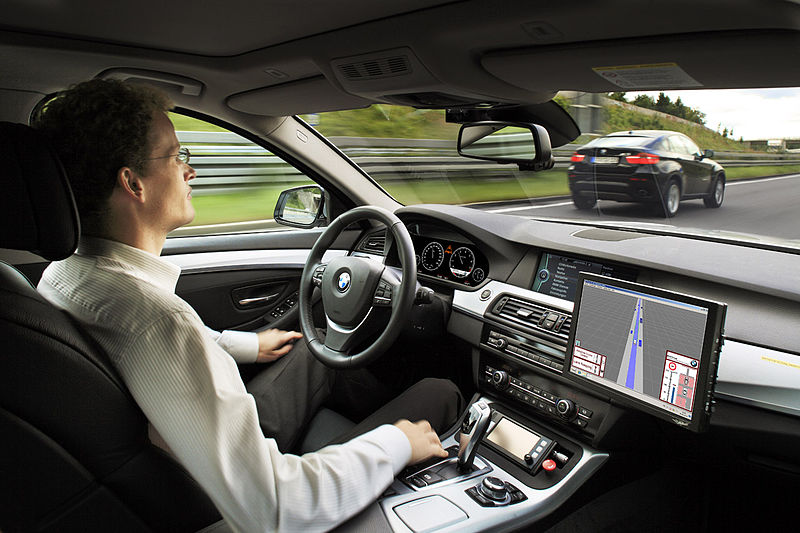Human error accounts for around 94% of all car accidents in the United States – could self-driving cars end that? While the public opinion on that answer varies, there are certainly both benefits and downfalls to having autonomous vehicles on the road. With some companies promising a public launch date as soon as 2017, it’s important that the car manufacturers figure out how to make these vehicles as safe as possible before putting them on the road.
How they work
Of the numerous car manufacturers in the process of developing autonomous vehicles, they are using and testing several different ways to safely operate vehicles. These methods add to the safety of self-driving cars by acting as the eyes and brains of the vehicle to ensure it is making the safest decisions on the road. The methods include:
- Cameras: Cameras work in conjunction with the onboard computer and mimic the way a human drives a vehicle. They send live video of the scene surrounding the car to the onboard computer, and the computer acts as the “brain” to determine how to react to the situation.
- LiDAR Systems: LiDAR (Light Detection And Ranging) sends out a 360-degree laser beam surrounding the car, creating a high-resolution 3D map of the area around the car. This system can also predict the movement of other vehicles and nearby pedestrians.
- Ultrasonic Sensors: These sensors focus on detecting the positions of curbs, lane markers, and other vehicles to avoid colliding with an object or other vehicles.
- Onboard Computers: All autonomous vehicles have one – regardless of what other systems they have in place. The onboard computer takes in the information sent to it by the sensors, cameras or radar, and uses that information to make decisions regarding steering, braking, and accelerating.
Facts and Stats
The recent fatal car accident involving a Tesla on Autopilot that failed to automatically brake has highlighted the debate as to whether fully-autonomous cars are safer than human drivers. Human error accounts for thousands of accidents every year. Drivers hitting stationary objects or debris, drunk drivers, and hit and run accidents all add to this total.
To determine which type of driver is safest, it’s important to look at the statistics of autonomous vehicles and human drivers:
Human Drivers (2014)
- S. drivers drove over 3 trillion highway miles in 2014 alone
- About 33,500 people died in the U.S. due to traffic accidents
- Approximately 90 people died each day in car accidents
- An estimated 2.3 million people were injured in collisions
- 3,179 people were killed from distracted driving, and 431,000 were injured
- 1 fatality for every 90 million miles driven
- Other significant contributing factors were cellphone usage, fatigue, aggressive driving, and running red lights
Driverless Cars (2009-present)
- Over 132 million miles driven since 2009
- 2 deaths have been reported (only one of them being in the U.S.)
- 14 accidents have been reported involving autonomous cars
- 1 fatality for every 130 million miles driven
While these statistics imply that autonomous cars are significantly safer than human drivers, it’s important to remember that the sample sizes for the two groups are dramatically different – and some experts even refer to the comparison as “worthless”. A RAND Corporation report stated that for autonomous vehicles to have a proper sample size to even begin to compare with human drivers, they would need to drive “as many as hundreds of billions of miles”. However, what critics and fans both seem to agree on is the fact that cars with full autonomy have the potential to be safer than human drivers since they cut out risks like drunk driving, fatigue, aggressive driving and more.
What’s Next?
To get an early start on regulating the autonomous vehicle sector, the National Highway Traffic Safety Administration (NHTSA) issued a set of guidelines they recommend auto manufacturers to follow. These guidelines, short of being hard-set laws, provide a platform to build future regulations on and ensure that safety is at the forefront of the development process. The four-part policy includes:
- 15-point safety assessment
- Model state policy
- Current regulatory tools
- Model regulatory tools
The NHTSA plans to work with autonomous technology companies to make sure the vehicles going onto the roads are the safest they can possibly be and to avoid a “path work” of state laws. The policy is designed to evolve with improving technology, and to provide Americans with transparency from the companies developing the vehicles.
As far as insurance and liability, experts expect a shift in accident liability from the driver to the car manufacturer – because it is assumed that if an accident occurs and there is no “driver,” it must be an inherent flaw in the vehicle technology. Some car companies have already stated they plan on accepting full-liability if their self-driving cars are involved in collisions in the future. This is an area of the law that will need to be made crystal clear by the NHTSA to avoid any injustice.
As autonomous vehicles begin to become more of a reality, it’s important that consumers, the federal government, and car manufacturers work in concert with each other to bring these vehicles to life. As of now, the two biggest testers of autonomous vehicles are Tesla and Google – although companies including BMW, Volvo, and Mercedes-Benz are developing self-driving technology, as well. While Tesla keeps most of their recorded data to themselves, Google releases monthly reports documenting their successes and failures, and are available for public viewing.





No Comment